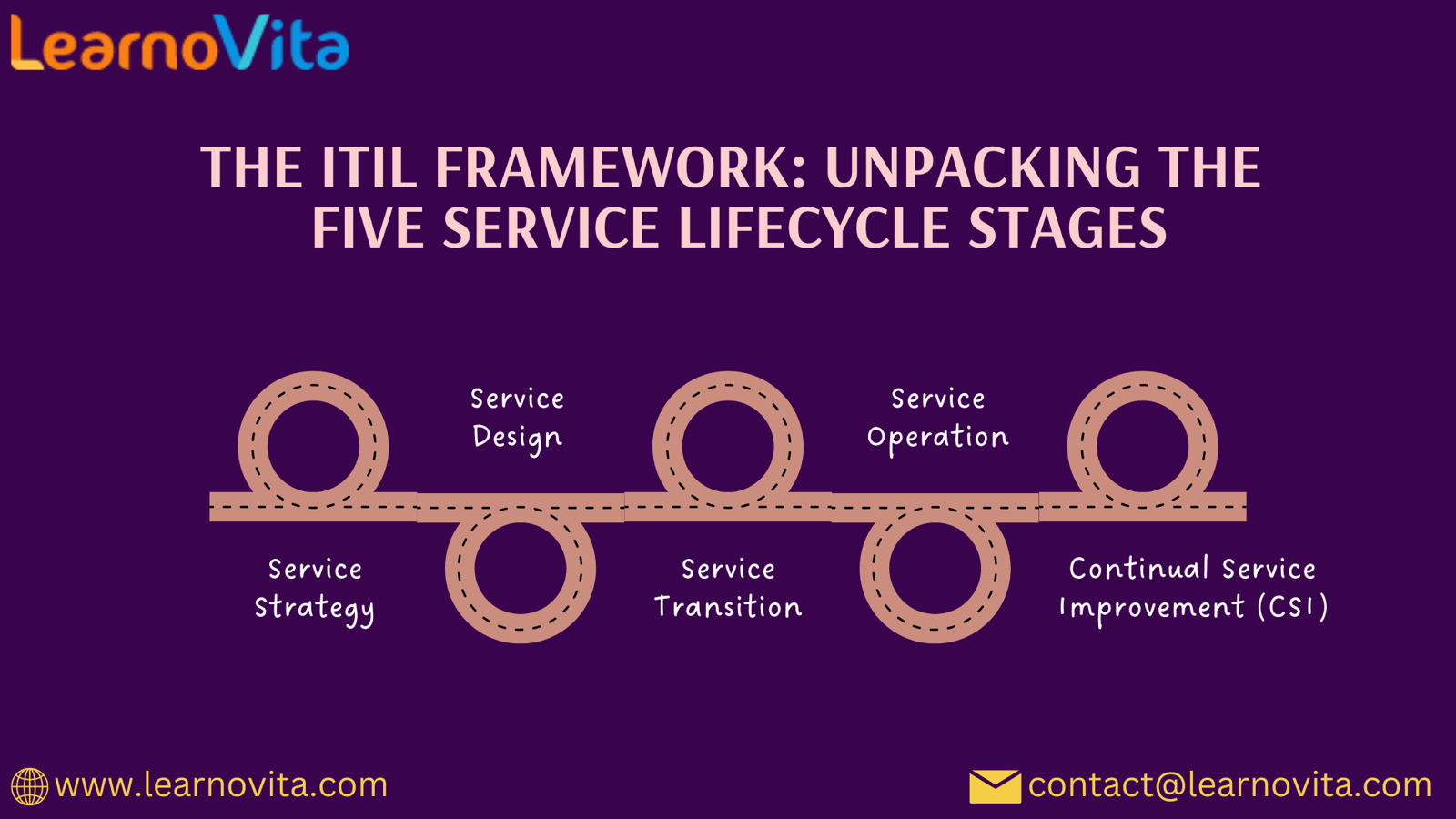Understanding ITIL: The Five Key Phases of the Service Lifecycle
In today's dynamic digital environment, effective IT service management is crucial for organizations looking to meet customer expectations and achieve strategic goals. The Information Technology Infrastructure Library (ITIL) provides a structured framework that helps organizations enhance their IT services. This blog explores ITIL and its five essential phases of the service lifecycle.
If you want to excel in this career path, then it is recommended that you upgrade your skills and knowledge regularly with the latest ITIL Certification Course.

What is ITIL?
ITIL is a set of best practices designed for IT service management (ITSM). It aims to align IT services with business objectives while delivering value to customers. The ITIL framework emphasizes a lifecycle approach, ensuring that services are continuously improved and adapted to meet evolving business demands. The five phases of the ITIL service lifecycle are critical to achieving this goal.
The Five Service Lifecycle Phases
1. Service Strategy
The Service Strategy phase serves as the foundation of the ITIL framework. During this phase, organizations define their service offerings and how they will create value for customers. Key activities include:
- Assessing market needs and customer expectations.
- Developing service portfolios that align with organizational objectives.
- Establishing financial and resource management practices.
By laying a strong foundation in the Service Strategy phase, organizations can ensure their IT services are purposeful and strategically aligned.
2. Service Design
Following the strategy, the Service Design phase focuses on creating detailed service specifications. This phase involves planning and designing new services while also modifying existing ones. Key activities include:
- Formulating service solutions that cater to customer needs.
- Developing effective service management processes.
- Ensuring compliance with quality standards.
Service Design is essential for creating services that are not only functional but also efficient and sustainable.
3. Service Transition
In the Service Transition phase, services are planned and implemented into the live environment. This phase aims to ensure a smooth delivery with minimal disruption. Key activities include:
- Effectively managing change and release processes.
- Conducting thorough testing and validation of new services.
- Facilitating knowledge transfer and training for support teams.
By effectively managing transitions, organizations can mitigate risks and ensure a seamless rollout of new or updated services.
With the aid of Best Software Training Institute programs, which offer comprehensive training and job placement support to anyone looking to develop their talents, it’s easier to learn this tool and advance your career.

4. Service Operation
Once services are live, the Service Operation phase takes precedence. This phase is responsible for delivering and supporting IT services in the production environment. Key activities include:
- Incident management for swift issue resolution.
- Problem management to identify and eliminate root causes.
- Request fulfillment to efficiently handle user requests.
Service Operation guarantees that IT services are delivered consistently and in compliance with established service level agreements (SLAs).
5. Continual Service Improvement (CSI)
The final phase, Continual Service Improvement (CSI), emphasizes the ongoing enhancement of services and processes. This phase involves assessing service performance and identifying areas for improvement. Key activities include:
- Analyzing service metrics and collecting customer feedback.
- Implementing improvement initiatives based on data insights.
- Documenting lessons learned and integrating them into future cycles.
CSI is crucial for ensuring that services remain aligned with evolving business needs, delivering long-term value.
Conclusion
ITIL offers a comprehensive framework for managing IT services through its five service lifecycle phases: Service Strategy, Service Design, Service Transition, Service Operation, and Continual Service Improvement. By adopting ITIL best practices, organizations can enhance service delivery, improve customer satisfaction, and ensure that IT services align with business objectives. Embracing ITIL not only drives operational efficiency but also positions organizations for success in a competitive digital landscape.
- Art
- Causes
- Crafts
- Dance
- Drinks
- Film
- Fitness
- Food
- Jogos
- Gardening
- Health
- Início
- Literature
- Music
- Networking
- Outro
- Party
- Religion
- Shopping
- Sports
- Theater
- Wellness



